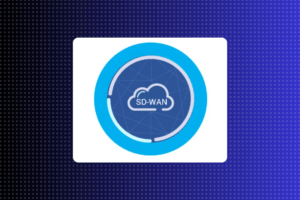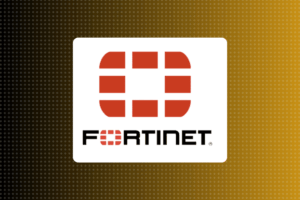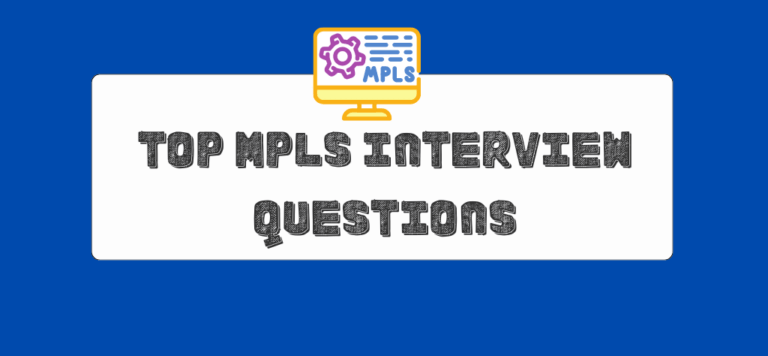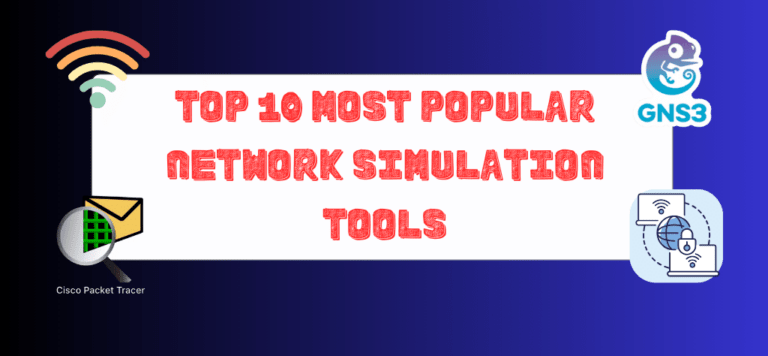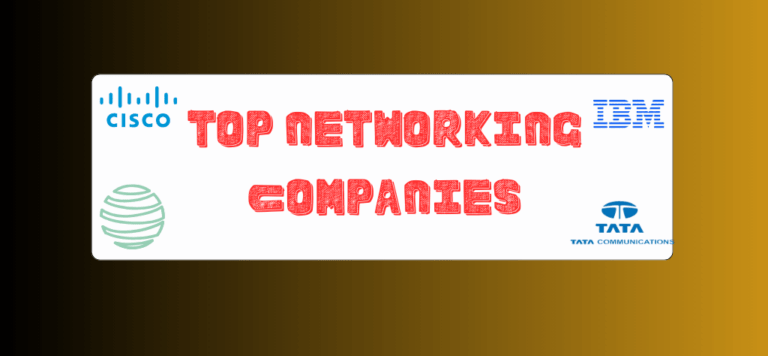Introduction
Embarking on a career as a network engineer is an exciting journey, and preparing for CCNA interviews is a crucial step in that process. In this article, we’ll delve into the top CCNA interview questions that network engineers may encounter, covering both technical and soft skill aspects.
Understanding the Basics
Before we dive into specific CCNA Interview Questions, it’s essential to understand the foundational knowledge required for a CCNA interview. A solid grasp of key concepts such as TCP/IP, OSI model, and subnetting is fundamental for success.
Some Common Technical CCNA Interview Questions Categories
TCP/IP and OSI Model
One of the cornerstones of networking is a deep understanding of the TCP/IP protocol suite and the OSI model. Interviewers often explore candidates’ knowledge in these areas to assess their grasp of network fundamentals.
Subnetting and IP Addressing
Network engineers must be adept at subnetting and IP addressing. Questions in this category may range from basic subnet calculations to more complex scenarios involving variable-length subnet masking.
Routing Protocols
Candidates are frequently asked about routing protocols like OSPF and EIGRP. Demonstrating practical knowledge of how these protocols operate in a network is crucial for success.
Switching and VLANs
Understanding the intricacies of switches and virtual LANs (VLANs) is vital. Questions may cover topics like spanning tree protocol, VLAN configuration, and troubleshooting switch-related issues.
Network Security
As cybersecurity becomes increasingly important, network engineers are expected to have a solid understanding of network security principles. Questions may address topics like firewalls, VPNs, and intrusion detection systems.
Below is a list of 200+ Top CCNA Interview Questions for Network Engineers
-
What is the OSI model?
-
Explain the TCP/IP model.
-
Differentiate between a hub and a switch.
-
Define IP addressing.
-
What is subnetting?
-
Explain the purpose of a router.
-
What is a VLAN?
-
Describe the purpose of ARP (Address Resolution Protocol).
-
Differentiate between a hub, switch, and router.
-
What is a MAC address?
-
Explain the role of DHCP.
-
Define NAT (Network Address Translation).
-
What is DNS (Domain Name System)?
-
Describe the function of ICMP.
-
Differentiate between TCP and UDP.
-
What is a default gateway?
-
Explain the purpose of a firewall.
-
Describe the concept of QoS (Quality of Service).
-
What is a subnet mask?
-
Define the purpose of a loopback address.
-
Explain the difference between half-duplex and full-duplex communication.
-
What is the purpose of the spanning tree protocol (STP)?
-
Define the term “collision domain.”
-
Explain the difference between a switch and a bridge.
-
What is the purpose of an access control list (ACL)?
-
Describe the function of a proxy server.
-
What is the purpose of RIP (Routing Information Protocol)?
-
Explain the concept of OSPF (Open Shortest Path First).
-
Define BGP (Border Gateway Protocol).
-
What is EIGRP (Enhanced Interior Gateway Routing Protocol)?
-
Describe the purpose of HSRP (Hot Standby Router Protocol).
-
Explain the concept of VLSM (Variable Length Subnet Masking).
-
What is a broadcast domain?
-
Define a collision in networking.
-
Explain the purpose of a MAC table.
-
What is the difference between static and dynamic routing?
-
Describe the role of SNMP (Simple Network Management Protocol).
-
What is the purpose of a proxy ARP?
-
Define the term “convergence” in networking.
-
Explain the purpose of a WAP (Wireless Access Point).
-
What is a CSMA/CD (Carrier Sense Multiple Access with Collision Detection)?
-
Describe the purpose of NTP (Network Time Protocol).
-
What is the purpose of a subnet?
-
Explain the concept of ARP poisoning.
-
Define the term “jitter” in networking.
-
What is the purpose of a GRE tunnel?
-
Describe the function of a content delivery network (CDN).
-
What is the purpose of DHCP relay?
-
Explain the concept of 802.1Q.
-
Define the term “anycast.”
-
What is a DHCP lease?
-
Describe the purpose of the H.323 protocol.
-
Explain the difference between IGRP and EIGRP.
-
What is the purpose of the STP root bridge?
-
Define the term “TCP handshake.”
-
What is a broadcast storm?
-
Describe the purpose of NAT overload.
-
Explain the concept of 802.11 standards.
-
What is the purpose of a DMZ (Demilitarized Zone)?
-
Define the term “port forwarding.”
-
Explain the purpose of the OSI model’s Data Link layer.
-
What is the purpose of a ping command?
-
Describe the function of a stateful firewall.
-
What is the purpose of a VPN (Virtual Private Network)?
-
Explain the concept of WEP (Wired Equivalent Privacy).
-
Define the term “DHCP snooping.”
-
What is the purpose of a broadcast address?
-
Describe the function of a proxy server in a network.
-
What is the purpose of the command “tracert”?
-
Explain the concept of ARP cache poisoning.
-
Define the term “802.1X.”
-
What is the purpose of the VLAN Trunking Protocol (VTP)?
-
Describe the function of a subnet calculator.
-
What is the purpose of a tunneling protocol?
-
Explain the concept of IPsec.
-
Define the term “black hole in routing.”
-
What is the purpose of the TCP window size?
-
Describe the function of a network bridge.
-
What is a broadcast address in IPv6?
-
Explain the concept of DHCP lease renewal.
-
Define the term “802.11i.”
-
What is the purpose of the TCP three-way handshake?
-
Describe the function of a network gateway.
-
What is the purpose of the DNS root server?
-
Explain the concept of EIGRP convergence.
-
Define the term “NAT reflection.”
-
What is the purpose of the STP designated port?
-
Describe the function of a proxy ARP table.
-
What is the purpose of the TTL (Time to Live) field in an IP packet?
-
Explain the concept of GRE tunneling.
-
Define the term “antenna gain” in wireless networking.
-
What is the purpose of the RADIUS protocol?
-
Describe the function of a network tap.
-
What is a collision domain in networking?
-
Explain the concept of port security.
-
Define the term “802.1Q trunking.”
-
What is the purpose of the NAT pool?
-
Describe the function of a DHCP server.
-
What is the purpose of the OSI model’s Physical layer?
-
Explain the concept of FQDN (Fully Qualified Domain Name).
-
Define the term “supernetting.”
-
What is the purpose of the MAC address table in a switch?
-
Describe the function of a network gateway.
-
What is a private IP address?
-
Explain the concept of H.264 in video streaming.
-
Define the term “bandwidth” in networking.
-
What is the purpose of the TCP acknowledgment number?
-
Describe the function of a BGP router.
-
What is the purpose of the EIGRP K-values?
-
Explain the concept of a Layer 3 switch.
-
Define the term “jumbo frames.”
-
What is the purpose of the ARP cache?
-
Describe the function of a network proxy.
-
What is the purpose of a network mask?
-
Explain the concept of 802.1w (Rapid Spanning Tree Protocol).
-
Define the term “unicast.”
-
What is the purpose of the DHCP ACK message?
-
Describe the function of a network IDS (Intrusion Detection System).
-
What is the purpose of a frame check sequence (FCS)?
-
Explain the concept of a MAC filtering.
-
Define the term “load balancing” in networking.
-
What is the purpose of the TCP sequence number?
-
Describe the function of a network router.
-
What is a public IP address?
-
Explain the concept of NAT64.
-
Define the term “802.11ac.”
-
What is the purpose of the OSI model’s Presentation layer?
-
Describe the function of a network sniffer.
-
What is the purpose of the STP bridge priority?
-
Explain the concept of a VPN tunnel.
-
Define the term “broadcast address” in IPv6.
-
What is the purpose of the RIPv2 protocol?
-
Describe the function of a network proxy server.
-
What is the purpose of the OSI model’s Session layer?
-
Explain the concept of port forwarding in NAT.
-
Define the term “wireless spectrum.”
-
What is the purpose of the ICMP Echo Request message?
-
Describe the function of a network load balancer.
-
What is the purpose of the OSI model’s Application layer?
-
Explain the concept of a BGP AS (Autonomous System).
-
Define the term “latency” in networking.
-
What is the purpose of the TCP urgent pointer?
-
Describe the function of a network switch.
-
What is a link-state routing protocol?
-
Explain the concept of a VPN concentrator.
-
Define the term “802.1Q tunneling.”
-
What is the purpose of the STP port priority?
-
Describe the function of a network hub.
-
What is the purpose of the OSI model’s Transport layer?
-
Explain the concept of DHCPv6.
-
Define the term “broadcast domain” in VLANs.
-
What is the purpose of the DNS CNAME record?
-
Describe the function of a network gateway.
-
What is the purpose of the OSPF designated router?
-
Explain the concept of a DHCP relay agent.
-
Define the term “802.11g.”
-
What is the purpose of the OSI model’s Network layer?
-
Describe the function of a network firewall.
-
What is the purpose of the HSRP virtual IP address?
-
Explain the concept of IP Multicast.
-
Define the term “802.1ad” (Q-in-Q).
-
What is the purpose of the TCP header flags?
-
Describe the function of a network proxy server.
-
What is a link-local address in IPv6?
-
Explain the concept of a Layer 4 switch.
-
Define the term “802.11n.”
-
What is the purpose of the OSI model’s Data Link layer?
-
Describe the function of a network tap.
-
What is the purpose of the VRRP protocol?
-
Explain the concept of a DHCP scope.
-
Define the term “802.1p.”
-
What is the purpose of the OSI model’s Physical layer?
-
Describe the function of a network IDS/IPS.
-
What is the purpose of the EIGRP hold time?
-
Explain the concept of a broadcast domain in VLANs.
-
Define the term “subinterface.”
-
What is the purpose of the OSI model’s Presentation layer?
-
Describe the function of a network load balancer.
-
What is the purpose of the TCP window size?
-
Explain the concept of a BGP router ID.
-
Define the term “802.11ax.”
-
What is the purpose of the OSI model’s Application layer?
-
Describe the function of a network switch.
-
What is the purpose of the RSTP protocol?
-
Explain the concept of a VPN tunnel.
-
Define the term “802.1Q tunneling.”
-
What is the purpose of the STP port priority?
-
Describe the function of a network hub.
-
What is the purpose of the OSI model’s Transport layer?
-
Explain the concept of DHCPv6.
-
Define the term “broadcast domain” in VLANs.
-
What is the purpose of the DNS CNAME record?
-
Describe the function of a network gateway.
-
What is the purpose of the OSPF designated router?
-
Explain the concept of a DHCP relay agent.
-
Define the term “802.11g.”
-
What is the purpose of the OSI model’s Network layer?
-
Describe the function of a network firewall.
-
What is the purpose of the HSRP virtual IP address?
-
Explain the concept of IP Multicast.
Preparation Tips
To succeed in a CCNA interview, it’s crucial to have a well-thought-out preparation strategy. Create a study plan, utilize practice exams, and engage in hands-on labs to reinforce your theoretical knowledge.
Interview Etiquette
Beyond technical competence, interviewers evaluate your professionalism and interpersonal skills. Dress appropriately, maintain eye contact, and handle challenging questions with confidence.
Post-Interview Strategies
After the interview, send a thank-you note expressing gratitude for the opportunity. Take time to reflect on the experience, identifying areas for improvement and learning from the interview process.
Conclusion
Preparing for CCNA interviews requires a combination of technical knowledge, soft skills, and strategic preparation. By mastering the top CCNA interview questions and embracing a holistic approach to preparation, aspiring network engineers can confidently navigate the interview process and land their dream roles.

